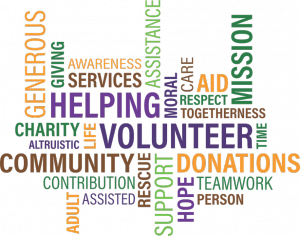People go in to the non profit industry for a wide array of reasons. For most people, that reason has something to do with serving their community. Many people in the non profit Industry do not anticipate having to manage risk, but how effectively their organization manages risk will contribute immensely to the success or failure of the organization. Some of the aspects of managing risk include: developing safety programs, writing liability waiver forms, designing a return-to-work program for injured workers or purchasing workers’ compensation insurance. In order to effectively manage risk, here are three tips every Non Profit Professional should consider when determining how to manage the risks your organization faces.

Have an effective safety program in place.
Having an effective safety program in place is essential for all non-profit organizations. First and foremost, this is simply the right thing to do. It is the right thing to do for your employees, for your volunteers and for your organization as a whole. The success of the safety program starts with the leaders of the organization. If the leaders of your organization make it clear that you value safety, the employees and volunteers will value safety as well. What an effective safety program looks like will differ depending on the scope and mission of your organization. A safety program for local soup kitchen will be dramatically different than an NGO that distributes medicine across several different countries. For that reason, it is important to invite a risk management professional to sit on your board of directors. If you do not know someone in this field you can consult with your insurance agent. They typically have generic programs in place for many different industries.
Deciding when and if your organization needs to purchase insurance?
For a small or recently founded organization, you may be able to do without insurance for a short period of time. This is not something to take lightly. No matter how little money your organization has, not securing proper insurance can lead to your organizations failure if an accident does happen without proper coverage. Eventually there will come a time when your organization will need coverage. The state you are located in will determine when you are required by law to purchase some coverages. Workers’ compensation insurance is usually the first coverage you will be required to purchase. This policy covers the risk of bodily injury to your employees. General liability insurance covers bodily injury and property damage done to third parties. These third parties may be the people you serve or anyone who comes in contact with your organization. These two policies are typically the first policies a non profit will consider and they are the bare minimum coverage. As your organization grows these two policies may not fully cover your business from all risks. You may not understand all of the risks you actually face and the types of insurance you need. Consulting with an insurance professional whom you trust is important at this stage in your risk management process. Asking someone who works in insurance to volunteer with your organization or to sit on your board is a good idea.
Have a return-to-work program in place for injured employees.
Developing an effective return-to-work program is something that can be a work in progress. Ideally your safety program works and you do not have many injuries. Even if you only have the occasional minor injury, it is best practice for your organization to have a plan for getting an injured worker back to work as soon as possible. The quicker they get back on the job the more likely they are to return to regular work and the mission of your organization. Some common jobs for injured workers include basic office work like stuffing envelopes, answering the phone or writing thank you letters to donors. Getting people back on the job quickly is important because people who work in this industry frequently have a special relationship with the work they do. Many of them want to be a part of something greater than themselves. This is especially true with the millennial generation. When these people are injured and not able to work, part of their life is taken from them. The longer it is not a part of their life, the more likely they are to not come back to work at all. This is when the cost of a claim can become the greatest and is when you can expect to see an increase in your insurance premium. Having an effective return-to-work program can help these employees get back on the job, control the cost of your workers’ compensation claim and continue the mission of your organization.
